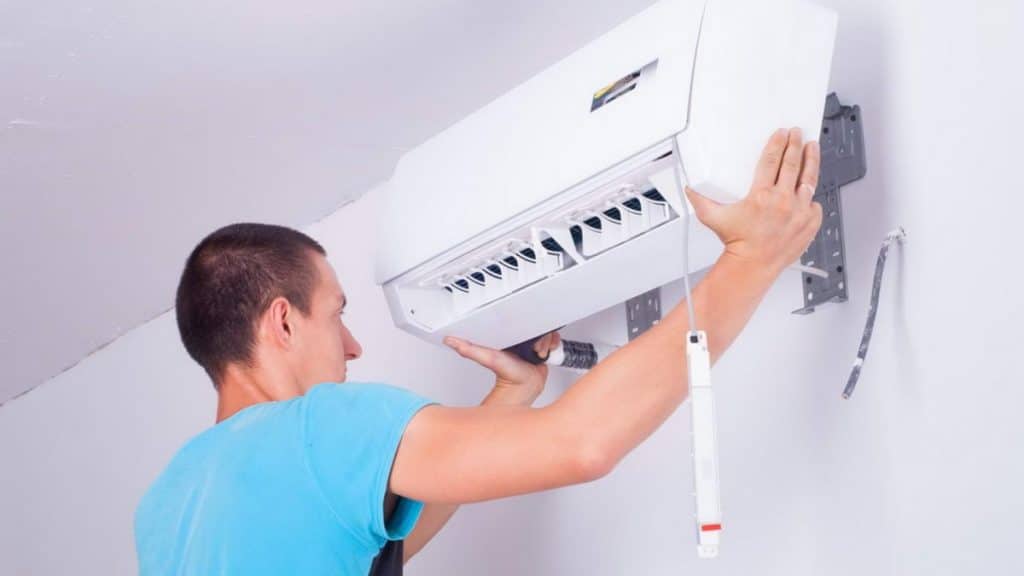Selecting the right location for your air conditioning (AC) installation is a crucial decision that can significantly affect the system’s performance, efficiency, and longevity. By carefully choosing where to place the AC unit, homeowners can ensure better cooling, lower energy costs, and fewer maintenance issues. In this guide, we’ll explore important factors to consider when determining the best location for your AC unit installation.
1. Evaluate Your Home’s Layout for Optimal Cooling
One of the first steps when installing an AC unit is assessing the layout of your home. Factors such as room size, ceiling height, and the positioning of doors and windows all play a role in how air circulates. Ideally, the AC should be installed in a location that allows cool air to flow evenly throughout the home without obstructions. Placing the unit centrally or in an area that connects multiple rooms can promote better airflow and cooling efficiency.
2. Consider Sunlight Exposure to Maximize Efficiency
Direct sunlight can heat an area and force your AC to work harder, leading to increased energy consumption and higher utility bills. When choosing a location, it’s important to consider how much sunlight the area receives throughout the day. If possible, place the AC in a shaded area to reduce heat exposure. Alternatively, you can invest in an energy-efficient AC model with a high SEER rating, designed to handle high heat loads without consuming excessive energy.
3. Prioritize Proper Airflow to Improve Performance
Proper airflow is essential for an AC system to function efficiently. When choosing a spot, make sure there are no obstructions, such as furniture, curtains, or walls, that could block the flow of air. Restricted airflow forces the AC to work harder, increasing wear and tear and reducing its cooling capabilities. It’s also essential to ensure the placement allows air to move freely through the return air vent, as this is where the system draws warm air before cooling it.
4. Minimize Noise by Choosing a Quiet Location
Air conditioners can be noisy, especially during high-demand operation. If noise is a concern, carefully consider where you install the unit. Avoid placing the system near bedrooms, living rooms, or home offices, as this can cause disruptions. If space is limited and the AC must be installed near frequently used rooms, you can opt for a quieter model or add sound-reducing insulation around the unit to minimize noise pollution.
5. Ensure Accessibility for Maintenance and Repairs
Regular maintenance is critical to the longevity of your AC system, and choosing a location that is easy to access for service is important. When deciding where to install your unit, consider the accessibility for HVAC technicians. The AC should be installed in an area where it’s easy to reach for cleaning, filter changes, and repairs. Being near essential service points, such as your home’s electrical panel and drainage system, is an added advantage that can streamline maintenance tasks.
6. Check Local Building Codes and Homeowner Association Rules
It’s crucial to ensure your installation complies with local building codes and regulations. Some municipalities have specific guidelines regarding the distance between the AC unit and property lines, as well as noise restrictions. Additionally, if you live in a neighborhood governed by a homeowner association (HOA), there may be further restrictions on where you can install your AC system. Consulting with your HVAC technician and local authorities can help ensure your installation meets all requirements.
7. Seek Professional HVAC Advice to Avoid Common Mistakes
Although it’s possible to choose an AC location based on your assessment, consulting with a professional HVAC technician is always a wise move. Professionals have extensive experience in understanding how different factors, such as load calculations, airflow, and efficiency standards, affect the overall performance of your system. They can recommend the best location based on your home’s unique layout and ensure the installation is done properly, maximizing both comfort and energy savings.
Choosing the right location for your AC installation in Plano, TX, is key to ensuring optimal performance, energy efficiency, and comfort. From considering your home’s layout to evaluating sunlight exposure and airflow, the placement of your unit plays a significant role in the overall effectiveness of your cooling system. By following these guidelines and seeking professional advice, you can make a well-informed decision that benefits both your home and your wallet.
Is your home in need of a new air conditioning system? Let the experts at Classic Heating & Air guide you through the installation process, ensuring your unit is placed in the perfect location for maximum comfort and efficiency. They will also help you with regular AC maintenance after the installation.
FAQs:
1: What are the signs that my AC unit is installed in the wrong location?
If your AC unit is installed in the wrong location, you may experience several issues, such as:
– Inefficient Cooling: If certain rooms remain warm while others are cool, it may indicate improper airflow due to poor placement.
– High Energy Bills: A unit that struggles to maintain a comfortable temperature will consume more energy, resulting in higher utility bills.
– Frequent Breakdowns: If the AC requires constant repairs, it may be due to inadequate airflow or excessive strain from being in a poorly suited location.
If you notice these signs, consider consulting with a professional HVAC technician to evaluate the installation site.
2: Can I install my AC unit myself, or should I hire a professional?
While some homeowners may consider a DIY installation to save costs, hiring a professional is highly recommended for several reasons:
– Expertise: HVAC technicians have the training and experience to assess your home’s specific needs and recommend the best installation location.
– Compliance: Professionals ensure that the installation meets local building codes and regulations, preventing potential legal issues.
– Proper Setup: An expert will ensure the unit is installed correctly, optimizing its performance and longevity while avoiding common installation mistakes.
